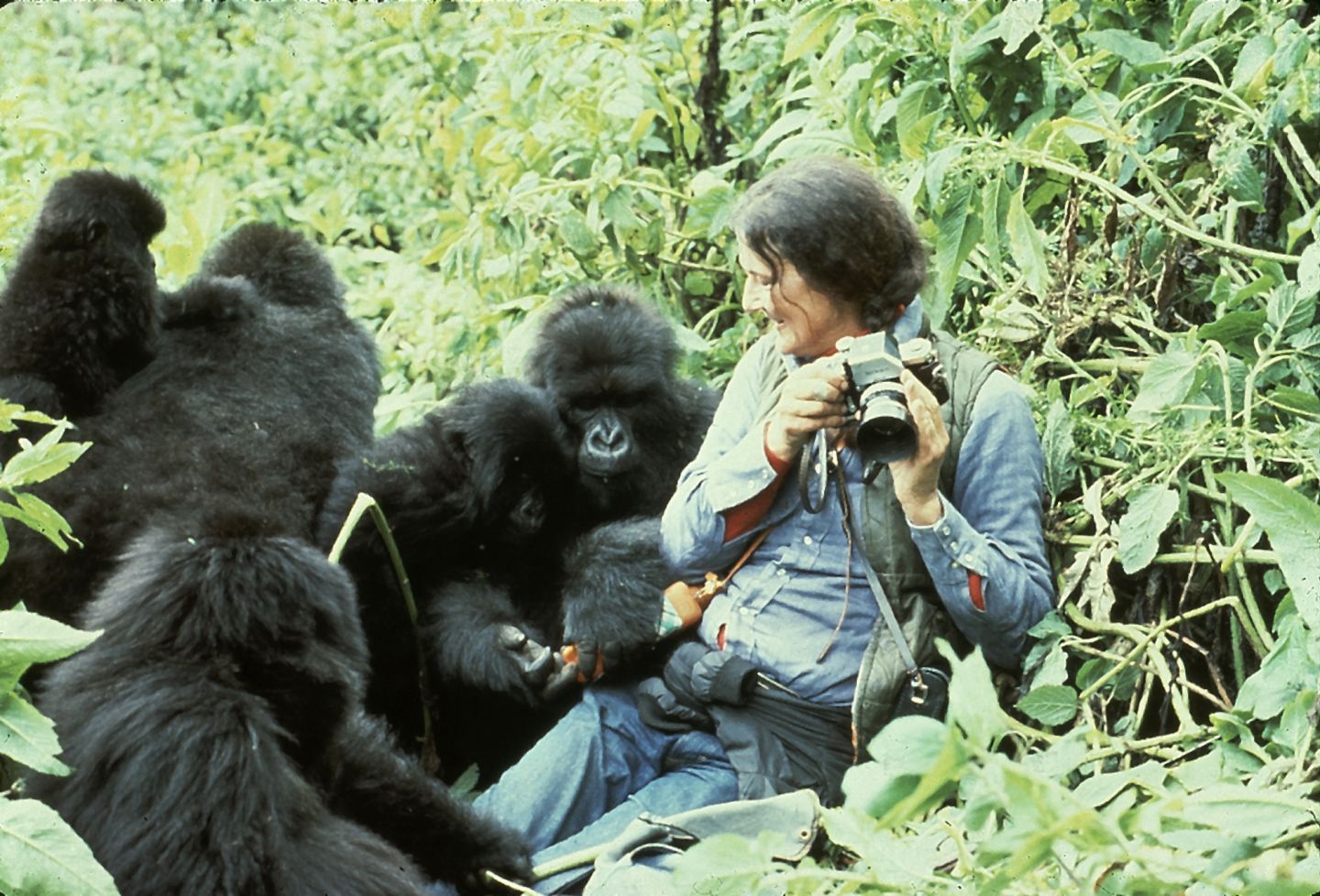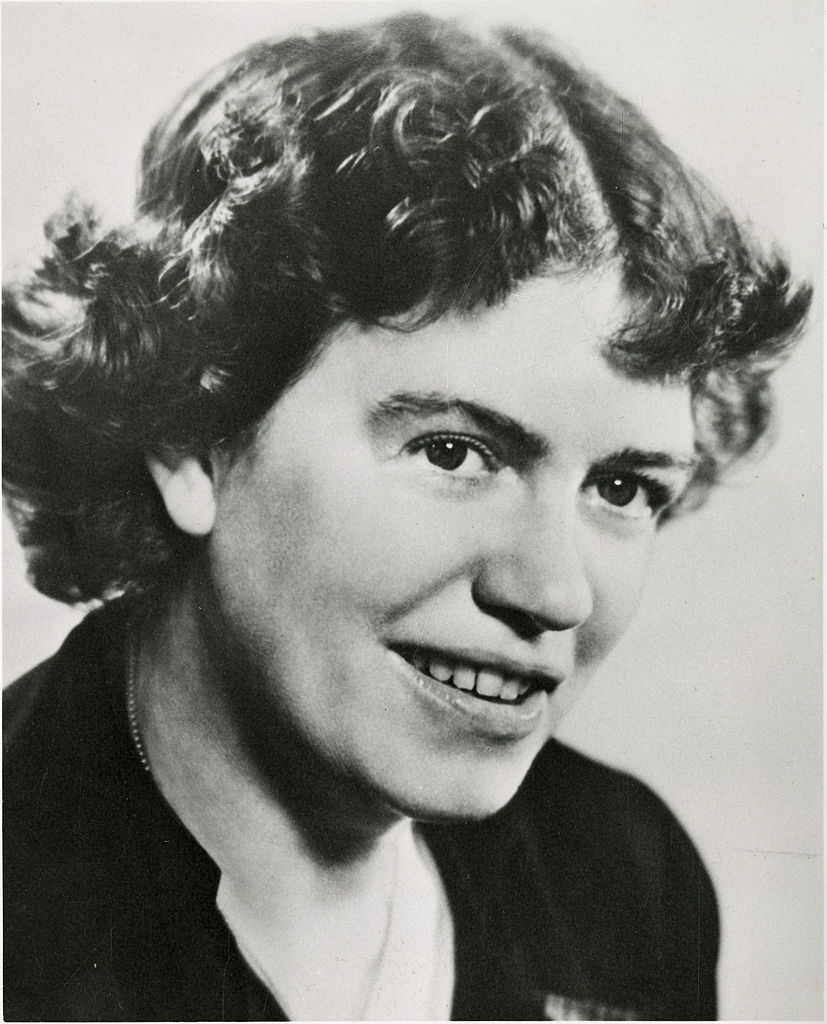From the Archive
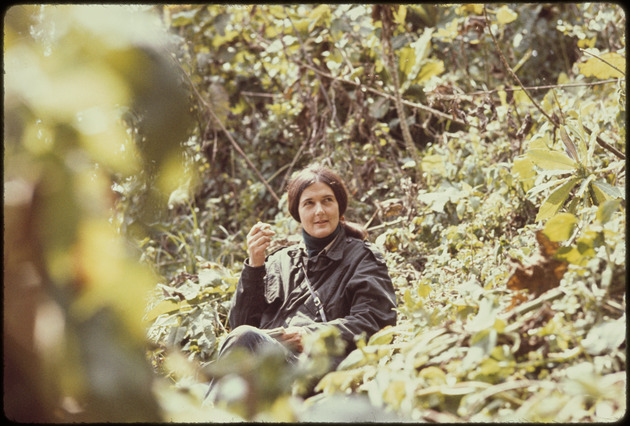
September 24 marks World Gorilla Day and the anniversary of Dian Fossey’s founding of the Karisoke Research Center in Rwanda. This annual event celebrates gorillas and inspires global communities to take action for their conservation.
This year, we honor Dian Fossey’s legacy and connection with The Leakey Foundation by sharing a never-before-seen lecture from our archives. This historic presentation was originally delivered at the Louis Leakey Memorial Symposium in 1973. The lecture offers rare insights into Fossey’s work, just six years after she began her groundbreaking mountain gorilla study. The video includes annotations and an introduction by Dr. Kelly Stewart. These additions provide context about what we’ve learned in the decades since Dian Fossey gave her lecture.
From the Archives: Dian Fossey Lecture
By Dr. Kelly Stewart
Research Associate, University of California, Davis
Leakey Foundation Grantee
I am a primatologist who studied mountain gorillas at Dian Fossey’s Karisoke Research Center in the Virunga Mountains in Rwanda. I met Dian Fossey through The Leakey Foundation and went to Rwanda to work with her in 1973, the year this lecture was recorded.
Dian Fossey brought gorillas to the world’s attention. She changed their image from that of a vicious King Kong to the gentle giant that we think of today. She revealed how gorillas lived and how their society worked. As you watch this film, you must remember that the world had never seen anything like this.
When Dian began her study in 1967, she could not have known that it would become one of the longest-running studies on any primate in the world. She also could not have guessed that the descendants of the individuals you will see in this film are still being observed. When you view this film, you may be surprised, like I was, at the quality of the footage. You may also be surprised by the amount of gorilla behavior and ecology information Dian collected in just a few years.
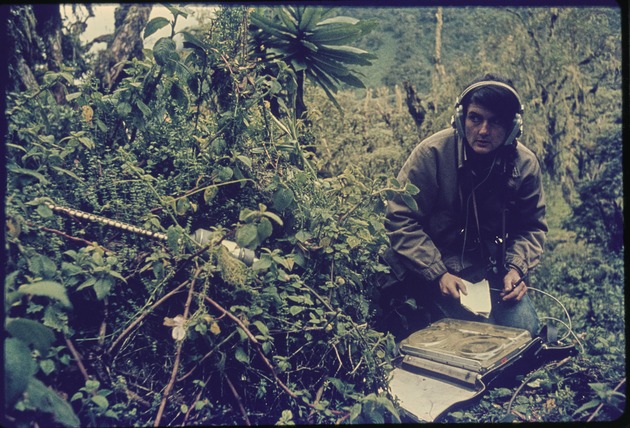
Gorilla Society
Dian Fosssey’s 1973 lecture shows us the basic structure of gorilla groups, with essentially one adult male, two or more adult females, and their offspring. It illustrates the importance of male-female bonds to group cohesion, and it provides incredible footage of an encounter between two groups and the movement of one of the females from one group to another. Dian Fossey referred to females in a situation like this as being kidnapped, but we now know that females have much more of a say in the matter than was thought at the time. This female choice is very important in the working of gorilla society and the search for mates that are unfamiliar and not relatives.
We now know that at about seven years of age, a female might move to several different groups before settling down to breed with one silverback. Once they do, they’re very loyal. And the average time that a male and female stay together breeding is 10 years. Decades of research have uncovered variations in this basic gorilla blueprint. For example, 30 to 40% of groups in the Virunga region have more than one adult male. This comes about when a young male does not leave the group when he reaches maturity, but stays as a subordinate male, and then inherits the group when the older leading silverback dies. Now, DNA analysis shows that subordinate males can father about 15% of the infants in the group, so there is some advantage for a young male to stay in the group.
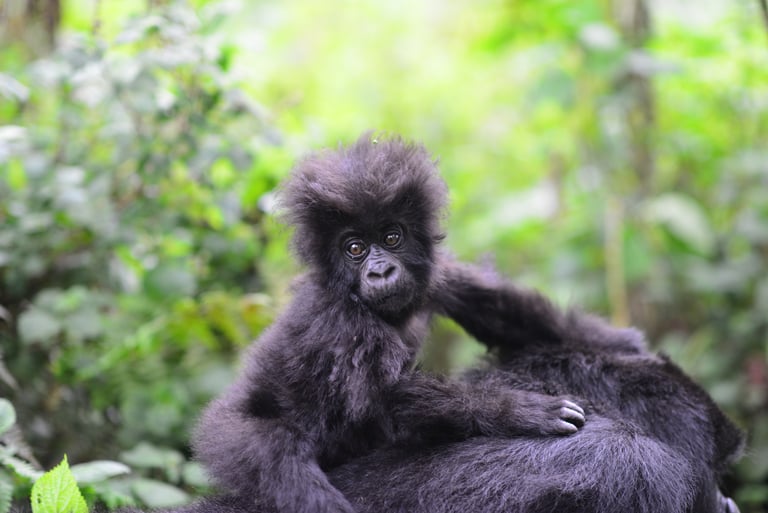
A Conservation Success Story
There is still much to discover, and Dian Fossey would be fascinated by the new understanding of gorilla behavior and society. But I think what would hearten her the most is the turnaround in mountain gorillas’ prospects for survival. You will see in this film that Dian speculates the gorillas might be extinct by the end of the 20th century.
In this film, Dian estimated that there were about 500 mountain gorillas in the wild. In 1978, she sounded the alarm about the plight of gorillas and long-term conservation efforts went into effect. Today, several organizations work to conserve gorillas, including the Dian Fossey Gorilla Fund and Gorilla Doctors.
Thanks to these and other gorilla conservation efforts, there are now more than 1,000 mountain gorillas in Africa. This is Dian Fossey’s legacy.
I believe there is no more fitting way to celebrate World Gorilla Day than to revisit Dian Fossey’s 1973 lecture and learn how it all began. I hope this video inspires you to keep learning about mountain gorillas and to take action to support gorilla research and conservation.
This archival lecture series is sponsored by Jo Rainie Rogers and George Rogers, Kay Harrigan Woods, the Ann and Gordon Getty Foundation, and the Joan and Arnold Travis Education Fund.
Science + Conservation + You = A Future for Gorillas
Your support fuels crucial research, education, and conservation. Please donate today!

